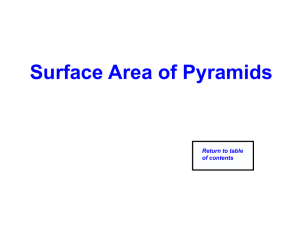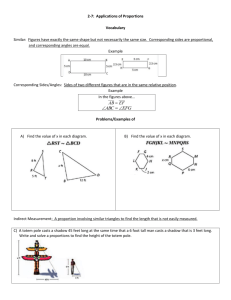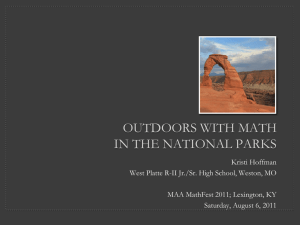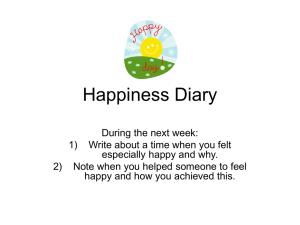ABSTRACT - Interpreting Ceramics
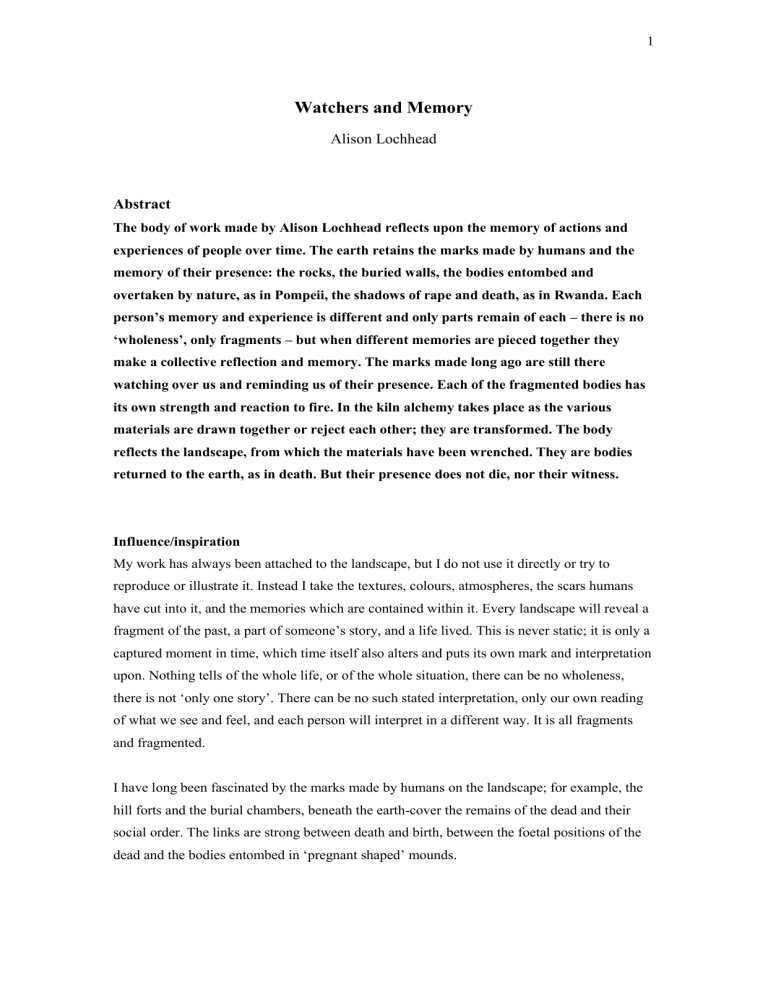
1
Watchers and Memory
Alison Lochhead
Abstract
The body of work made by Alison Lochhead reflects upon the memory of actions and experiences of people over time. The earth retains the marks made by humans and the memory of their presence: the rocks, the buried walls, the bodies entombed and overtaken by nature, as in Pompeii, the shadows of rape and death, as in Rwanda. Each person’s memory and experience is different and only parts remain of each – there is no
‘wholeness’, only fragments – but when different memories are pieced together they make a collective reflection and memory. The marks made long ago are still there watching over us and reminding us of their presence. Each of the fragmented bodies has its own strength and reaction to fire. In the kiln alchemy takes place as the various materials are drawn together or reject each other; they are transformed. The body reflects the landscape, from which the materials have been wrenched. They are bodies returned to the earth, as in death. But their presence does not die, nor their witness.
Influence/inspiration
My work has always been attached to the landscape, but I do not use it directly or try to reproduce or illustrate it. Instead I take the textures, colours, atmospheres, the scars humans have cut into it, and the memories which are contained within it. Every landscape will reveal a fragment of the past, a part of someone’s story, and a life lived. This is never static; it is only a captured moment in time, which time itself also alters and puts its own mark and interpretation upon. Nothing tells of the whole life, or of the whole situation, there can be no wholeness, there is not ‘only one story’. There can be no such stated interpretation, only our own reading of what we see and feel, and each person will interpret in a different way. It is all fragments and fragmented.
I have long been fascinated by the marks made by humans on the landscape; for example, the hill forts and the burial chambers, beneath the earth-cover the remains of the dead and their social order. The links are strong between death and birth, between the foetal positions of the dead and the bodies entombed in ‘pregnant shaped’ mounds.
2
The land tells of stories, both beneath it and on its surface. What looks like a colourful abstract painting takes on a different meaning when on a closer look the shapes and patterns are the scars made by machinery; the undulations and shadows show the workings of a mine. To make such a landscape involves human effort and suffering and often slave-like conditions of labour, and many die extracting from the earth.
Flying over the Tigris and Euphrates, glorious in their shapes, colours, textures, and rhythms, they look so beautiful and give so much hope and pleasure. Yet to focus down and to read into the landscape about its history and present reality, and to reveal the destruction of an area in
Baghdad and the eviction and oppression of the Marsh Arabs, gives another vision. The building of the separation wall in Palestine will be a scar and a reminder of the division, the abuse of power and resulting hatreds, long after it is no longer visible above ground. No matter how much the rubble is cleared, the wall taken down, and the marsh restored, the marks will remain and the memory of what happened will be retained. In Afghanistan where the mud houses were bombed, they remain fragile, torn, and exposed, and then return to the earth, but the earth the houses are made from will have a different construction; it will never return in the same way it came out and will always retain its story.
The story the land reveals is often one of brutality, the horrors and destruction of humans rather than the positive and the calm. Often skeletons show signs of an untimely death, with broken bones, embedded axe heads, and fractured skulls. Other buried bodies, such as the ‘bog people’ show evidence of garrotting and ritual killing. In spite of the suddenness of destruction in Pompeii the remains reveal so much of that moment. I am left wanting to know more about what is being exposed and what the scenes of death reveal about the lives and stories of the people who are made known to us. At times it feels like being a voyeur looking in on another’s private life, a tiny snatch of it made known and easy to misinterpret; ‘the fragment’.
There are visible linkages between the past and the present, the textures of the skin of the dead often eerily reminiscent of the living. There are similarities of feeling and texture between ageing skin, the skin of the recently dead, and the oil covered skin of an oil worker in Kuwait after the explosions of the wells during the Gulf War. The questions about what is in the present and what is in the past, what informs and feeds what, is a constant uncertainty. The oil worker extracting from the past to feed the present can make it difficult to differentiate between past and present, between what is above ground and what below. I ponder about what is going into the land now to inform the future and what is rising from within it to try to reveal itself to me and inform our present living. Where does responsibility lie to learn from the past in order not to repeat the stories and destructions revealed to us?
3
Images of massacres, the bodies left to rot, as in the recent genocide in Rwanda, reflect horrors of today, but are also reminiscent of the unearthed bog people, the exposed mass graves; the land will remember what has been put into it. The embedded hatreds of the past, which keep revealing themselves and are embedded in the land, seem to constantly rise up to take revenge on the present. The shadows of bodies left behind, as those in Hiroshima, make the living determined to never let that happen again. As memory fades and a new generation emerges without the immediate history, then the determination also changes and fades. Sometimes we manage to try to say ‘enough is enough’ but usually the hatred, the misinterpretations, the bias and narrow mindedness are overwhelming and continue the cycles of insecurity and violence.
Ever increasing fragmentation
For many years I tried to put my feelings, my politics, and my thoughts into my work. I tried to intellectualize them and then make the work conform to images I hoped would portray what I was trying to say, whether this was around violence against women, pornography, state abuse of power, or whatever I was struggling with and wanting to express, to try to explain and expose. At that time I failed miserably and the work reflected this – it was flat and said nothing. I decided to let it all go and go back to my love of rocks, their colours and textures; to de-intellectualize my approach to my work. I made casts of my body and aimed simply to make these bodies look like rocks. I went back to playing and to allowing my inner being to take over.
My bodies are only fragments; they are rarely whole. They are fragments of my thoughts and thinking, of revealed experience and interpretation; they are incomplete stories. The materials used fragment; the bodies blow up in the kiln and sometimes reassemble themselves in different ways. Often the areas that explode are the breasts and the tummy, which for me can reflect some of the most vulnerable areas for women and this seems quite symbolic.
The bodies reveal vulnerabilities of humans, and increasingly the backbone of the body started to become important in the work; it kept emerging. To me the backbone reveals the strength within a body but it also reveals its utter vulnerability. It exposes the inner being of a body, turning it inside out.
The joy of the casts and materials
Many of the bodies I make emerge out of casts I have made of my body. No other body can be used; it has to be mine. The work is of my experience and interpretation, no one else’s, so no one else’s body can be used. The casts play an important part in the creation of the work. The
4
‘Modroc’ casts slowly break down with each usage, the body becoming more and more shadowed, its features disappearing, much as a body will break down after death but keeping a suggestion of its presence. The whole becomes dissipated as it changes; it takes on a different character and history. The work takes on its own life, through the cast.
Other casts I use go into the kiln and are fired with the body inside. The clays and metals move into the cast itself and after firing the plaster gets chiselled off, breaking the mould and revealing the fired body. It reminds me of archaeology and what the earth will reveal; what gets chiselled off by mistake, always to be lost, and what needs to be further chiselled to reveal an inner part. The real work takes place in the kiln through the alchemy that happens there, through the tensions that emerge between the different materials, the clays, metals, glass, slate, earth. The clay that unexpectedly emerges as old skin, the tears which emerge as the fire works within the body, the materials that completely disappear leaving behind craters and gaps, revealing inner parts that were unknown in the making. Some of the materials merge together and become strong, others tenuously hold onto each other. It is unknown what will happen.
The bodies can take on wounds from molten materials emerging from crevices in the body and take on scars and textures of the earth while in the kiln.
All my bodies represent ‘watchers’ to me. They retain the memories of the land and of those who lived in it and expose their experience in surprising ways. Each person’s memory and experience is different and only parts remain of each, there is no ‘wholeness’, only fragments; the body itself is not a whole as each part has different memories and experience. However, when different memories are pieced together they make a particular collective reflection and memory. The marks made long ago are still there watching over us and reminding us of their presence. The body reflects the fragmented experience within the land, from which the materials have been wrenched. They are bodies returned to the earth and the minerals found within it, as in death. But their presence does not die, nor their witness. They will watch over us, to remind us of what we do, of what we should remember and why we should remember and not repeat the brutalities of the past, and indeed the present.

![Volume of Prisms and Cylinders [12/4/2013]](http://s2.studylib.net/store/data/005712570_1-e7691fc1893418ebe51c7a30e9e35d27-300x300.png)

